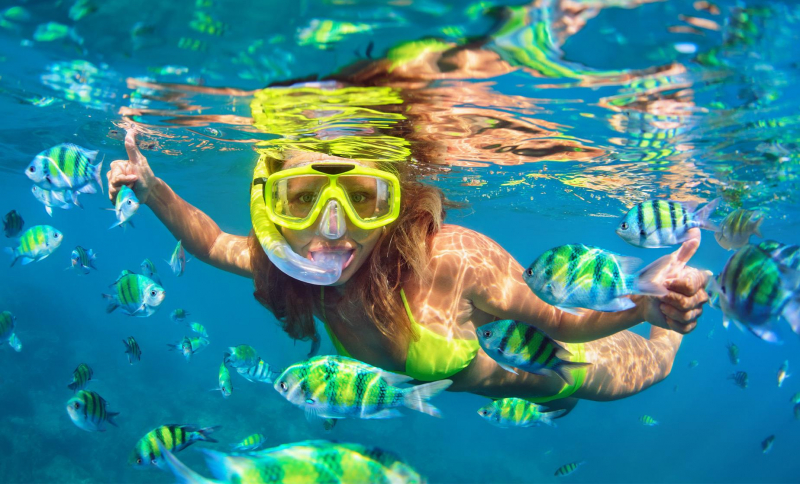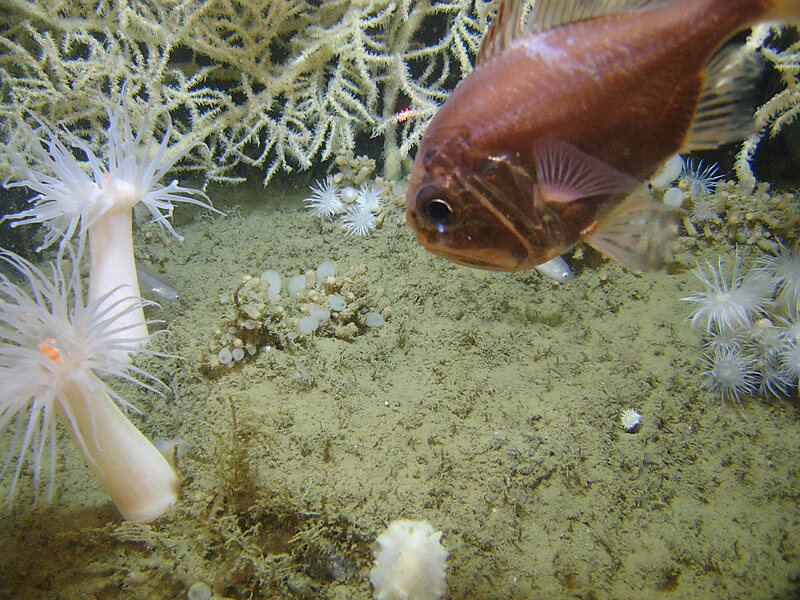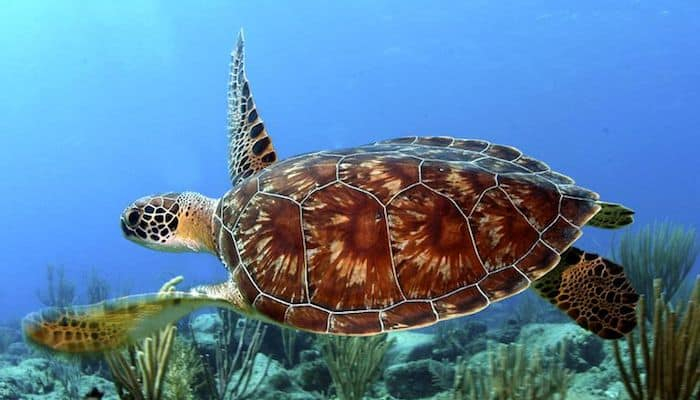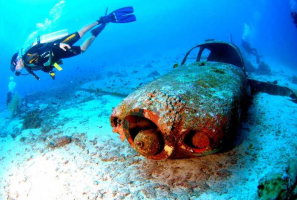Top 10 Best Diving Sites in Saint Kitts and Nevis
For divers of all skill levels, St. Kitts & Nevis is an excellent choice. The islands are part of the Leeward Islands in the Lesser Antilles, and are near to ... read more...St. Martin and Saba, two of the most popular tourist attractions. Let's take a look at some of best diving sites in St. Kitts and Nevis.
-
The River Taw was sunk in a hurricane in 1981 and immediately became a popular dive site for divers of all levels of expertise. This inter-island freight ship is moored at Fort Tyson on a flat, sandy bottom. In the various holes and tunnels, octopus, stingrays, and turtles have taken up residence.
Lobsters and a plethora of fish are popular attractions. For photographers, this is an excellent resource. In 1985, the 144-foot inter-island ship sank. River Taw was standing on a sandy bottom when River Taw first went down. Hurricane Hugo split her in two in 1989. The wreck boasts a fantastic coral cover as well as a large variety of fish. Because the location is just 40 feet deep, it's a popular second dive and ideal for training dives.
Because of the superb visibility, River Taw is also an ideal place for photography. This is without a doubt one of the top wreck dives in the world. Sponges and Coral are used to coat the decks and superstructure. There are plenty of fish to be found. Although "George," who was here for many years, has long since moved away, there is typically a resident Barracuda. Many visitors consider this to be one of the Best Diving Sites in Saint Kitts and Nevis.

https://myscubadivinggearguide.com/ 
https://myscubadivinggearguide.com/ -
This is a fantastic antique ship that was lost in a bad hurricane in 1983. The Talata Wreck is a lengthy line that lies on a reef and is nicely broken up. Parts of the bows and stern, as well as engine blocks and a lot of steel plate, are still in good shape.
Speckled Morays are plentiful and will appear everywhere like "Whack-A-Moles." Talata Wrecks is another popular wreck location for divers of all experience levels. Currently submerged in around 55 feet of water. In 1989, the M/V Talata was sunk by a storm.
Another storm has shifted her 100 feet since her sinking. Talata Wreck is fully filled with corals and reef fish and sits straight. For intermediate and experienced divers, this is a fantastic scuba dive. It is home to a gigantic green moray, schools of squirrelfish, and some of the world's largest pufferfish. This place is also very attractive to tourists from all over the world because of its beautiful surroundings.

https://prodiversstkitts.com/ 
https://prodiversstkitts.com/ -
Brimstone Shallows Reef is about two miles due west of the beach and has beautiful soft and hard corals. The mooring depth is around 45 to 50 feet, and the wall drops to depths exceeding 130 feet. Creole wrasse schools are prevalent.
Barracuda, turtles, lobsters, and eels also call this place home, and if you're lucky, grey reef sharks will show up. St Kitts is home to one of the deepest areas of the Brimstone Shallows Dive Site, which is about 2 miles from the beach. The soft and hard corals are in great shape here. Many visitors consider this to be one of the Best Diving Sites in Saint Kitts and Nevis.
The seaward side of the wall dips down to a sandy bottom with spots of coral growing in Brimstone Shallows Reef. Schools of fish may be seen towards the top of the wall. Larger species, such as Grey Reef sharks, are frequently found along the slopes of the gently sloping cliffs. The profusion of marine life is due to the sloping cliffs with deep water on both sides.

https://prodiversstkitts.com/ 
https://prodiversstkitts.com/ -
The Finger Reef, which stretches out like a finger, exudes excitement from the minute you get into the water and gaze below. As you swim along the top of the reef at around 60-70 feet, a ridge on all sides invites you. From the deep blue and what lays inside, schools of creole wrasse, jacks, and mackerel encircle you.
St Kitts' the Finger Reef Dive Site is part of the Brimstone Shallows reef system and offers great diving. The tall thin pinnacles of granite with steep ridges sloping off on all sides give this reef its name. Large Grey Reef Sharks, Schools of Wrasse, and Horse Eye Jacks, as well as the occasional Eagle Ray and whatever else swims in from the deep ocean, may all be found here.
Elbow Reef's Fingers Reef is a portion of reef in the mid-south. This region is dominated by sand channels and coral fingers, and it is home to a variety of tropical fish. This area's many ledges going north to south are ideal hiding spots for morays and nurse sharks, and it's also noted for its schools of barracuda. It offers a consistent depth profile that is usually shallow and 40 feet or less, making it excellent for Jr. Divers and Open Water classes.

https://www.shoreexcursionsgroup.com/ 
https://www.shoreexcursionsgroup.com/ -
Coconut Tree Rocks is a typical reef dive for this region, with plenty of grunts, snapper, and tiny groupers. A popular hangout for barracuda, spotted moray, lobsters, and rays. The corals are in good shape, and the various sand grottos that dot the reef add to their beauty.
Coconut Tree Rocks is one of the area's biggest reefs. Dive depths range from 40 to 110 feet. With a significant quantity of barrel corals, the reef is in excellent condition. Large schools of fish will be visible, with visibility of up to 100 feet. The trip begins with a pool session and a tutorial on the fundamentals of scuba diving.
A diving boat will take you out to sea for a one-tank dive once you have mastered the fundamental regulations, such as clearing the mask, clearing your ears, breathing underwater, signaling OK, signaling out of air, and controlling buoyancy. The dive is overseen by PADI instructors with years of experience. Participants in the resort course must be at least ten years old.

https://prodiversstkitts.com/ 
https://prodiversstkitts.com/ -
Every diver's favorite dive is Friars Bay Reef. It has been a favourite location for many and will always give a beautiful easy reef dive with much to see. It is located approximately a mile from the beach. Large lobsters and spotted morays, as well as juvenile angelfish, abound.
Stingrays have taken up residence on the sand along the reef's borders, seemingly unaffected by the curious diver. South Friars Bay has by far the greatest snorkeling. The Friars Bay Reef is plainly seen from the beach, which is only around 20 yards away. On the northwest end of the reef, directly outside the Carambola Beach Club, is the ideal location to enter.
After you've descended from Timothy Hill, there's a sign for the beach club on the road. Swim to the reef's outer edge and swim parallel to it (Southeast). Continue to swim; there are plenty of fish and other aquatic life to see. Because the top of the reef is sometimes just below the water's surface, you won't be able to cross to the beach side. There's no need to be concerned because the finest snorkeling is on the reef's periphery. It is alright if you simply swam around the perimeter of the reef. Sea Urchins and Fire Coral are also present.

https://www.shoreexcursionsgroup.com/ 
https://www.shoreexcursionsgroup.com/ -
The towering black coral trees that sprout from this small wall are the main draw here. The wall's edge is teeming with Creole wrasse and snapper, while lizardfish are constantly threatening to disturb the tranquility by pursuing the abundant grunt fish. Black Coral Reef will impress on the tourists by its stunning landscape.
Black Coral Reef is home to rare black coral, which is used in jewelry manufacture and is consequently endangered. Sea glass abounds on this black sand beach. At this point, you can see the Atlantic and Caribbean waves crashing together.
There is a decently sheltered cove for swimming on the Caribbean side (but be aware that there are no public showers). St. Kitts has been off the tourist radar for a long time, but it is now a rising star in the Caribbean diving and tourism scene.
This peaceful and beautiful island, which stuck to its agricultural origins until the early 2000s, is now home to resorts that mix natural charm and genuine hospitality with access to a variety of undersea experiences and natural attractions. Divers will discover a variety of areas to explore, including shallow reefs and coral-encrusted wrecks, as well as volcanic finger ridges and deep gorges.

https://travel.sygic.com/ 
https://travel.sygic.com/ -
Approximately 34 miles off the coast of Frigate Bay. Frigate Bay Reef is home to turtles, lobsters, and eels, and as a result, it is extremely popular with both freshly certified and veteran divers. A tiny reef that is nearly tailor-made for divers who appreciate many levels of diving.
Reefs and wrecks that were formerly infrequently frequented are now regularly visited by both local operators and liveaboards as an increasing number of visitors discover this location. With clean water, few currents, and both reefs and shipwrecks accessible to all divers, the underwater environment provides a full range of Frigate Bay Reef diving experiences.
There are also more difficult profiles and exploratory-style trips to more remote sites available, but for the most part, the benefits are simple access and long bottom periods on reefs that are home to a diverse array of tropical marine species. Many visitors consider this to be one of the Best Diving Sites in Saint Kitts and Nevis.
There is a big school of Amberjack and countless rainbow-colored Parrotfish at Frigate Bay, often known as The Pyramids. The shallow dive at Friar's Bay Reef is perfect for macro photographers. In barely 40 feet of water, large clusters of Blue Bell Tunicates, Feather Duster worms, and Christmas Tree Worms dominate the reef.

https://travel.sygic.com/ 
https://travel.sygic.com/ -
Tube sponges, barrel sponges, enormous sea fans, and black coral trees abound on Green Point Reef. Angelfish, tiny grouper, and dogtooth snapper are among the fish that may be found. Lobsters are once again abundant owing to Green Point's many cracks and fissures.
There are few hard corals and the underwater architecture is volcanic. Green Point Reef is a fantastic diving location. Many different forms of marine life, such as lobsters and corals, hang out in this deep reef. This is a fantastic diving location. Many different forms of marine life, such as lobsters and corals, hang out in this deep reef. It's a damaged rock structure that has fallen into the sea and built a mini-wall that's ideal for all types of creatures.
The bottom is made up of large volcanic stones covered with fire coral and sponge. Plump, black sea urchins may be spotted lurking in the cracks, posing a threat. Eagle rays may be seen skimming down the wall, feeding on surrounding grass beds. Many visitors consider this to be one of the Best Diving Sites in Saint Kitts and Nevis.

https://twofishdivers.com/ 
https://twofishdivers.com/ -
Turtle Bar Reef is located on the southern tip of St Kitts, in a bay. Long bottom periods are possible because of the depth. Visibility might be difficult to predict, particularly after rain. This reef is a maze of volcanic rock, with schools of fish lurking around every corner.
The deeper seaward wall and reef, as well as the shallower landward side, are large enough for two dives. This reef lies near to the ancient harbor's location, and some historic anchors may still be seen. Barracuda, Turtles, the ancient Nurse Shark, Moray Eels, and the typical parade of bait species make up the fish life.
Turtle Bar Reef is in outstanding condition due to the bay's protection from hurricanes. With gradually sloping walls, this is a classic multi-level dive location. There is a lot of marine life to be found here, and it is frequently an excellent spot to catch lobster. The dive will be intriguing because of the overhangs and rock formations. Many visitors consider this to be one of the Best Diving Sites in Saint Kitts and Nevis.

https://prodiversstkitts.com/ 
https://prodiversstkitts.com/






























